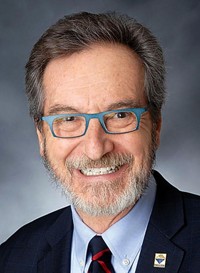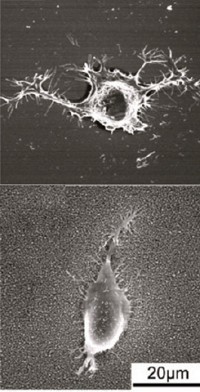Advertisement
Grab your lab coat. Let's get started
Welcome!
Welcome!
Create an account below to get 6 C&EN articles per month, receive newsletters and more - all free.
It seems this is your first time logging in online. Please enter the following information to continue.
As an ACS member you automatically get access to this site. All we need is few more details to create your reading experience.
Not you? Sign in with a different account.
Not you? Sign in with a different account.
ERROR 1
ERROR 1
ERROR 2
ERROR 2
ERROR 2
ERROR 2
ERROR 2
Password and Confirm password must match.
If you have an ACS member number, please enter it here so we can link this account to your membership. (optional)
ERROR 2
ACS values your privacy. By submitting your information, you are gaining access to C&EN and subscribing to our weekly newsletter. We use the information you provide to make your reading experience better, and we will never sell your data to third party members.
Policy
Progress On Stem Cells
by Rudy M. Baum, Editor-in-chief
January 15, 2007
| A version of this story appeared in
Volume 85, Issue 3
Much heated debate swirls around the issue of stem cells. Research in the U.S. involving embryonic stem cells has been limited since 2001 by a Bush Administration policy. An attempt by Congress to amend that policy was the subject of President George W. Bush's sole veto during his first six years in office. The Democratic leadership of the newly elected 110th Congress has made revision of the Administration's policy on embryonic stem cells one of its top priorities.
This week's cover stories on stem cells eschew the controversies and focus on the chemistry of maintaining stem cell lines and controlling their differentiation (page 19), the molecular biology that connects stem cells and cancer (page 28), and a patent dispute that bears significantly on the future of stem cell research (page 31).
The first two stories were written by Associate Editor Sarah Everts. "To wholly tame stem cells," Everts writes, "researchers must eventually figure out what gives rise to their privileged place in the cell hierarchy. In other words, they must answer this question: If every cell's destiny is provided for by the same genome, why do some cells get extra powers like eternal life and the ability to shift into a myriad of other types, while other cells must be content to live out a single fate?"
It turns out that chemistry is playing an essential role in answering that question, as well as providing stem cell researchers with chemically defined media to derive and maintain embryonic stem cells. "I see chemistry having a huge impact on stem cell biology," one researcher told Everts.
Everts explores a "dark side" of stem cells in her second story. As she writes, "If you catalog the characteristic features of a cancer cell, they sound uncomfortably similar to those of a stem cell." As it turns out, researchers have discovered that "cancer stem cells"—a small subset of all cancer cells with the capacity to proliferate into all of the cells that form a tumor—"are increasingly considered the root of all cancer."
Dismayingly, cancer stem cells appear much harder to kill than the other cells that make up a tumor. They may be responsible for the recurrence of some tumors after radiation and/or chemotherapy has apparently eliminated the tumor. Cancer researchers are beginning to devise ways to attack cancer stem cells and understand how they come into existence in the first place.
While the Bush Administration policy on embryonic stem cells is a significant roadblock to progress in stem cell research, Associate Editor Susan Morrissey reports that the three stem cell patents held by the Wisconsin Alumni Research Foundation (WARF) may represent an even greater hurdle.
The claims of the WARF patents are very broad, covering "all U.S.-based research using primate embryonic stem cell lines, including those derived from humans," Morrissey writes. "Thus, they give WARF a virtual monopoly on deciding who can do stem cell research in the U.S." Two nonprofit groups have asked the U.S. Patent & Trademark Office (PTO) to reexamine the technical merit of the WARF patents, and the office is now studying the patents to verify their validity. Both sides express confidence that PTO will side with them. An initial ruling from PTO is expected as early as this month.
This issue of C&EN contains numerous notable stories in addition to the cover stories. I want to draw your attention to one you might miss, the inaugural feature focusing on ACS committees. This week, Assistant Editor Rachel Petkewich examines the role and responsibilities of the Joint Board-Council Committee on International Activities. Petkewich interviewed committee Chair Nina McClelland to better understand how the committee functions and what it takes as its charge.
Over the next couple of years, C&EN will profile all 30-plus standing ACS committees. These bodies carry out a wide variety of activities to advance the chemical enterprise. The idea for the series originated with Joseph A. Heppert, chemistry professor at the University of Kansas and chair of the Society Committee on Chemical Education.
Thanks for reading.
Views expressed on this page are those of the author and not necessarily those of ACS.




Join the conversation
Contact the reporter
Submit a Letter to the Editor for publication
Engage with us on Twitter